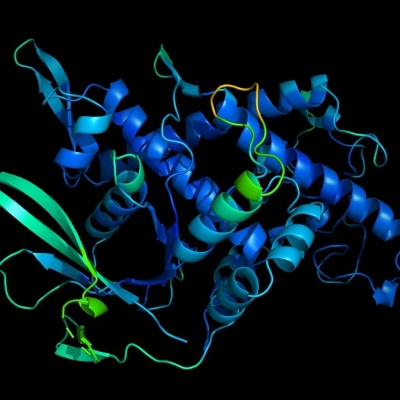
Proteins are essential to life, supporting practically all its functions. They are large complex molecules, made up of chains of amino acids, and what a protein does largely depends on its unique 3D structure. Figuring out what shapes proteins fold into is known as the “protein folding problem”, and has stood as a grand challenge in biology for the past 50 years. In a major scientific advance, the latest version of our AI system AlphaFold has been recognised as a solution to this grand challenge by the organisers of the biennial Critical Assessment of protein Structure Prediction (CASP). This breakthrough demonstrates the impact AI can have on scientific discovery and its potential to dramatically accelerate progress in some of the most fundamental fields that explain and shape our world.
In 1994, Professor John Moult and Professor Krzysztof Fidelis founded CASP as a biennial blind assessment to catalyse research, monitor progress, and establish the state of the art in protein structure prediction. It is both the gold standard for assessing predictive techniques and a unique global community built on shared endeavour. Crucially, CASP chooses protein structures that have only very recently been experimentally determined (some were still awaiting determination at the time of the assessment) to be targets for teams to test their structure prediction methods against; they are not published in advance. Participants must blindly predict the structure of the proteins, and these predictions are subsequently compared to the ground truth experimental data when they become available. We’re indebted to CASP’s organisers and the whole community, not least the experimentalists whose structures enable this kind of rigorous assessment.
The main metric used by CASP to measure the accuracy of predictions is the Global Distance Test (GDT) which ranges from 0-100. In simple terms, GDT can be approximately thought of as the percentage of amino acid residues (beads in the protein chain) within a threshold distance from the correct position. According to Professor Moult, a score of around 90 GDT is informally considered to be competitive with results obtained from experimental methods.
In the results from the 14th CASP assessment, released today, our latest AlphaFold system achieves a median score of 92.4 GDT overall across all targets. This means that our predictions have an average error (RMSD) of approximately 1.6 Angstroms, which is comparable to the width of an atom (or 0.1 of a nanometer).
Picture Credit : Google

